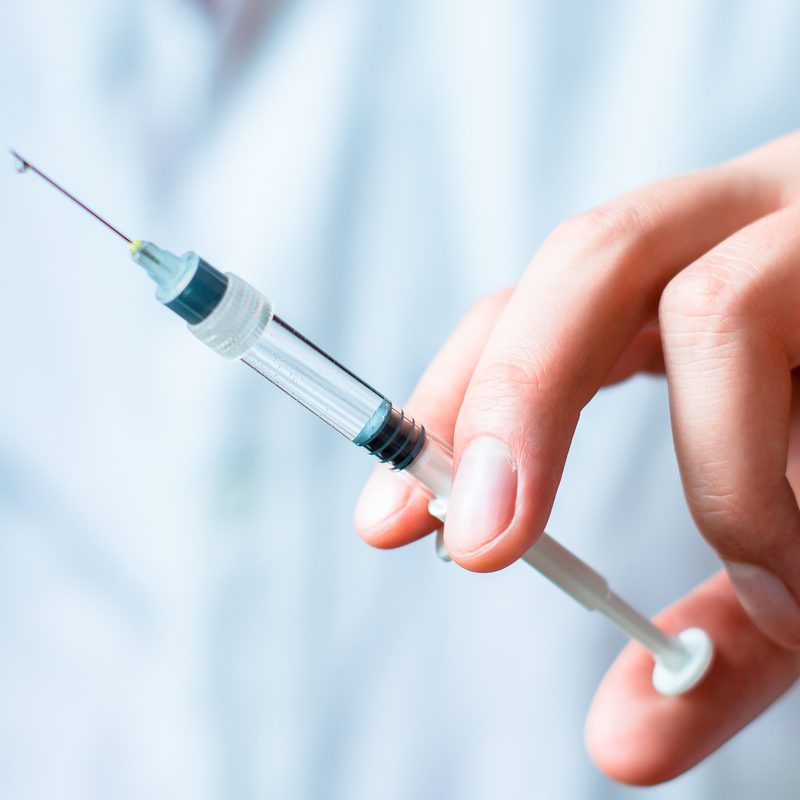Testosterone esters are a group of compounds formed from the hormone testosterone, which is a key androgen in the body essential for the development and regulation of male characteristics and reproductive activity. These esters are created by attaching an ester group to the testosterone molecule, modifying its solubility and release rate into the bloodstream. This chemical modification allows for controlled release of the hormone, which can provide more stable levels over time compared to pure testosterone itself.
Understanding the pharmacokinetics of testosterone esters is crucial in both therapeutic and performance enhancement settings. Different esters release the androgen at varying rates, which determines the frequency of administration and the onset of effects within the body. The choice of ester, therefore, has significant implications for how testosterone therapy is planned and monitored.
Safety and side effects are paramount concerns when dealing with hormone administration. Testosterone esters carry similar risks to testosterone in terms of potential side effects, but their modified release profiles can affect the potential for adverse reactions. As with any pharmacological agent, being aware of these aspects is crucial for ensuring a safe and effective treatment protocol.
Quick Summary
- Testosterone esters modify testosterone’s release rate and solubility.
- The pharmacokinetics of esters influence administration frequency and onset of effects.
- Safety profiles are essential considerations in testosterone ester therapy.
Basics of Testosterone Esters
Testosterone esters are a central theme in the pharmacokinetics of androgen replacement therapies, which fundamentally impact the release duration and half-life of the hormone in the body.
Chemistry of Esters
Testosterone esters are formed when testosterone, a hormone comprising carbon and hydrogen atoms, undergoes esterification. This chemical reaction involves replacing the hydroxyl group of testosterone with an organic acid’s ester group, yielding compounds with different properties. The primary function of this modification is to alter testosterone’s solubility and its release rate into the bloodstream when administered in oil-based injectable forms.
| Ester Group | Release Rate |
|---|---|
| Shorter carbon chains | Faster |
| Longer carbon chains | Slower |
Ester Types and Testosterone Derivatives
Several testosterone esters are widely used in clinical settings, each characterized by a different ester chain length and thereby a disparate onset and duration of action.
- Testosterone Propionate: A short-acting ester with a quick onset, typically administered every other day.
- Testosterone Enanthate: A long-acting ester providing sustained testosterone release, commonly administered bi-weekly.
- Testosterone Cypionate: Similar to enanthate with similar half-life, typically injected weekly.
- Testosterone Phenylpropionate: With moderate release rates, it is less commonly used alone, often found in mixed preparations.
- Testosterone Isocaproate and Testosterone Decanoate: Have longer release periods and are ingredients in Sustanon and Omnadren, mixed testosterone esters designed for stable serum testosterone levels.
- Testosterone Undecanoate: Possesses the longest chain, facilitating an even more extended release period suited for less frequent administration schedules.
References
https://www.ncbi.nlm.nih.gov/pmc/articles/PMC3188848/
https://pubchem.ncbi.nlm.nih.gov/compound/Testosterone_propionate
https://pubchem.ncbi.nlm.nih.gov/compound/Testosterone_enanthate
https://pubchem.ncbi.nlm.nih.gov/compound/testosterone_cypionate
Administration and Pharmacokinetics

Testosterone esters are administered via injection, and their pharmacokinetics, which include absorption rates and half-life, affect their clinical efficacy and dosing schedules.
Injection Methods
Testosterone esters are usually administered through intramuscular injection to ensure that the substance is slowly released into the bloodstream. Common injection sites include the thigh, hip, or glute, areas with sufficient muscle tissue to absorb and distribute the testosterone. These injections might be oil-based and utilize oil vehicles such as sesame oil or cottonseed oil to increase the solubility of testosterone esters.
Absorption and Half-Life
Upon injection, testosterone esters are absorbed into the muscle tissue, where they slowly enter the circulatory system. The absorption rate and half-life—the time it takes for the concentration of the drug in the body to reduce to half its initial value—depend on the ester’s chain length. These properties influence the frequency of administration, dosage, and potential for side effects.
Testosterone Ester Profiles
The pharmacokinetic profiles of different testosterone esters can vary. For instance:
- Testosterone propionate has a short half-life, requiring frequent injections.
- Testosterone cypionate has a mid-range half-life and is commonly dissolved in cottonseed oil.
- Testosterone enanthate shares a similar half-life with cypionate and is often dissolved in sesame oil.
The choice of ester depends on a patient’s therapeutic needs, lifestyle, and the doctor’s discretion.
Effects on the Body

Testosterone esters are formulations that release testosterone, a critical hormone governing various physiological processes in the body, over time. They utilize esterification to modify the hormone’s release duration and solubility.
Physiological Impact
Testosterone esters are used to treat conditions like male hypogonadism, where the body’s testosterone levels are abnormally low. Testosterone’s introduction into the body through esters results in normalization of testosterone levels, aiding in the maintenance of secondary sexual characteristics and reproductive function. These esters are lipophilic and are often administered via intramuscular injection into the glute, allowing for a controlled release of the hormone. In the bloodstream, esterified testosterone is converted into dihydrotestosterone (DHT) and estradiol, potent androgens with effects on various tissues.
The following demonstrates testosterone’s target action:
- Muscle Tissue: Enhances protein synthesis, promotes muscle growth and strength.
- Fat: Supports fat redistribution and influences fat metabolism.
- Bone: Contributes to bone density and strength.
- Brain: Affects mood, libido, and cognitive functions.
Anabolic And Androgenic Effects
Testosterone esters exhibit both anabolic and androgenic effects. As an androgenic agent, it binds to and activates androgen receptors, influencing physical characteristics typically associated with male traits and reproductive activity. It’s the conversion to DHT that heightens the androgenic activity due to a higher affinity for these receptors. Conversely, the anabolic effects pertain to the stimulation of muscle tissue growth and the promotion of bone density—key factors for individuals affected by muscle-wasting conditions or osteoporosis.
Testosterone’s conversion to estradiol, a form of estrogen, is also crucial as it contributes to feedback mechanisms in hormonal balance and exerts protective cardiovascular effects, among other physiological roles.
The impact of testosterone esters on the body ranges distinctly, as displayed below:
- Anabolic Effects:
- Muscle mass and strength increase
- Improvement in bone density
- Faster recovery from muscular stress
- Androgenic Effects:
- Development of male secondary sexual characteristics
- Maintenance of reproductive tissues
- Potential impact on behavior and mood
References
- “Testosterone therapy in men with hypogonadism: An Endocrine Society clinical practice guideline.” (https://www.endocrine.org/clinical-practice-guidelines/testosterone-therapy)
- “Androgens and anabolic steroids.” (https://medlineplus.gov/ency/article/002579.htm)
Therapeutic Uses and Performance Enhancement

Testosterone esters are utilized both in medical treatments such as hormone replacement therapy, and in the realm of sports for performance enhancement. The applications in these areas are distinct with specific protocols and outcomes.
Testosterone Replacement Therapy
Testosterone Replacement Therapy (TRT) is a medically supervised treatment that aims to restore testosterone levels in those with low testosterone (hypogonadism). Prescribed dosages of testosterone esters, such as testosterone enanthate or cypionate, are administered to mitigate symptoms like reduced libido, fatigue, and mood disturbances. Treatment protocols are customized, often involving aromatase inhibitors to manage estrogen levels.
- Dosage: Typically ranges from 50-400 mg every 2-4 weeks.
- Mood: TRT can improve mood and cognitive function.
- Recovery: Patients report faster recovery from fatigue.
Enhancement in Sports and Bodybuilding
In sports and bodybuilding, testosterone esters are often used for their anabolic effects. They fall under the category of Anabolic-Androgenic Steroids (AAS) and are not legal for use without a prescription due to potential health risks and for fairness in competition. Users seek benefits in muscle mass (bulking), strength, and improved recovery time, with usage often higher than medical dosages.
- Gains: Increase in muscle mass and strength.
- Bulking/Cutting Cycles: Used in cycles to build muscle or lean down.
- AI Technology: Refers to the usage of Aromatase Inhibitors to prevent estrogen-related side effects.
Nonetheless, their non-medical use is banned in professional sports and strongly discouraged due to potential severe side effects and ethical considerations.
References
- Testosterone therapy protocols: https://www.ncbi.nlm.nih.gov/pmc/articles/PMC3188848/
- Aromatase inhibitors in TRT: https://www.ncbi.nlm.nih.gov/books/NBK279105/
- Testosterone esters and their use in lifting: https://www.ncbi.nlm.nih.gov/pmc/articles/PMC4837307/
Safety and Side Effects

When considering testosterone esters, it is crucial to be aware of the potential safety concerns and side effects. Such knowledge helps in monitoring and mitigating risks associated with their use.
Monitoring and Long-Term Considerations
It is essential to monitor physiological parameters continually when someone is undergoing testosterone ester therapy. Long-term considerations include the potential impact on the cardiovascular system and hormone regulation. Clinicians typically conduct a baseline evaluation and regular follow-ups, focusing on blood pressure, lipid profiles, and hematocrit levels among other parameters.
- Baseline Evaluation:
- Blood Pressure
- Lipid Profile
- Liver Function Tests
- Hematocrit and Hemoglobin Levels
Monitoring should be individualized and include periodic assessments of:
- Testosterone Levels: To maintain within physiological ranges.
- Estradiol Levels: As excessive conversion of testosterone by aromatase can lead to adverse effects.
- Prostate-Specific Antigen (PSA): In middle-aged and older individuals to track changes that might indicate prostate issues.
Common Adverse Reactions
The administration of testosterone esters can lead to several side effects, which individuals should be apprised of. Post injection pain is a common, yet generally mild side effect. Arimidex (an aromatase inhibitor) is sometimes used to manage side effects related to excess estrogen, such as water retention and gynecomastia. Here is a brief overview:
- Post Injection Pain: Usually transient and associated with the injection site.
- Arimidex Usage: May reduce estrogen-related side effects but also cause:
- Joint Pain
- Mood Changes
- Androgen Receptor Interaction: Overstimulation can lead to acne and hair loss.
- Aromatase Inhibitor Side Effects: Include bone mineral density reduction and potential impact on lipid profiles.
It’s important to note that esters like testosterone buciclate may have different profiles of water solubility and might be associated with a distinct set of side effects or injection site responses.
Frequently Asked Questions

This section addresses common inquiries about testosterone esters and their uses. It provides key points about performance effects, variations in half-life, prescription practices, chemical structures, and factors influencing ester choice.
What are the effects of different testosterone esters on bodybuilding performance?
Different testosterone esters can influence bodybuilding outcomes due to their varied release times. For instance, shorter esters like testosterone propionate may require more frequent injections to maintain stable blood testosterone levels, which might be beneficial for cyclic bulking strategies. Longer esters such as testosterone enanthate provide a more sustained release, which can be advantageous for consistent muscle growth over time.
How do various testosterone esters differ in their half-life and release time?
Testosterone esters have different half-lives, which directly affect how long they remain active in the body. Short-acting esters like testosterone acetate may have a half-life of just a few days, while long-acting esters such as testosterone undecanoate can have a half-life of several weeks. This impacts the frequency of administration and the time it takes for steady-state levels to be reached.
Which testosterone esters are commonly prescribed for testosterone replacement therapy (TRT)?
Testosterone cypionate and testosterone enanthate are commonly prescribed esters for TRT due to their moderate half-lives, which allow for infrequent dosing, typically once every 1-2 weeks. This makes them convenient for patients, providing a balance between maintaining stable testosterone levels and minimizing injection frequency.
How does the chemical structure of testosterone esters influence their function in the body?
The chemical structure of testosterone esters incorporates an ester chain attached to the testosterone molecule. The length and size of this ester chain influence the solubility of the hormone in the bloodstream. Shorter chains result in faster absorption and a shorter duration of action, while longer chains slow the release and prolong the activity of testosterone in the body.
What are the potential benefits and risks associated with long ester testosterone use?
Long ester testosterone can provide sustained hormonal levels, reducing the frequency of injections, which may be more convenient for users. However, due to their prolonged action, long esters may also lead to more pronounced side effects, such as suppression of natural testosterone production, and may take longer to clear from the system, which could be a concern for those subject to performance-enhancing drug testing.
Which factors should be considered when choosing a testosterone ester for performance enhancement?
When selecting a testosterone ester, one should consider factors including the desired frequency of injections, stability of blood testosterone levels, the purpose of supplementation (bulking or cutting), personal response to ester variations, and potential side effects. The choice may also be influenced by individual goals, lifestyle, and the guidance of a healthcare professional.
Dr. Grant Fourie, a specialist in male hormones, is based in Cape Town, South Africa. He provides comprehensive treatments for conditions related to low testosterone, such as erectile dysfunction, fatigue, and mood changes. His methods include hormone replacement therapy and other modern treatment options.
Contact me via email or phone to book personal appointment in my clinic: The Village Square, Cape Town - South Africa



